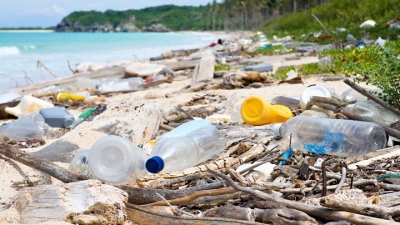
When people fail to conserve resources, Earth is affected in a number of ways:
Energy:
Natural fuels, such as gas and coal, are used up too quickly, and cannot be replaced. When petroleum products such as gasoline are burned for energy, they release toxic gases and high amounts of carbon dioxide, a greenhouse gas. Carbon helps regulate the Earth’s atmospheric temperature, and adding to the natural balance by burning fossil fuels adversely affects our climate.
There are huge quantities of petroleum found under Earth’s surface and in tar pits that bubble to the surface. Petroleum even exists far below the deepest wells that are developed to extract it.
However, petroleum, like coal and natural gas, is a non-renewable source of energy. It took millions of years for it to form, and when it is extracted and consumed, there is no way for us to replace it.
Pollution:
Waste gases in the atmosphere trap heat from the Sun, so the Earth gets hotter. We release a variety of chemicals into the atmosphere when we burn the fossil fuels we use every day. We breathe air to live and what we breathe has a direct impact on our health. Water Pollution Effects Just like the air we breathe, water is vital to our survival. We need clean water to drink, to irrigate our crops and the fish we eat live in the waters. We play in rivers, lakes and streams – we live near bodies of water. It’s a precious resource that can easily be polluted and the contamination can be transferred to us and affect our health.
Water:
Higher temperatures, along with low rainfall, will eventually lead to drought. The more that greenhouse gases saturate the atmosphere, the more intense global warming becomes. Global warming, or climate change, is a major causing factor of droughts. It’s unfortunate that human activities contribute to the emission of greenhouse gases, which in turn cause the abnormal elevation of global temperatures.
Higher temperatures will obviously lead to dryness and an increased rate of moisture loss from water sources, as well as in the soil.
This directly contributes to dry conditions, drier weather, and of course, droughts.
Food:
Drought and soil pollution can damage crops, so there is not enough food. The effects of soil erosion go beyond the loss of fertile land. It has led to increased pollution and sedimentation in streams and rivers, clogging these waterways and causing declines in fish and other species. And degraded lands are also often less able to hold onto water, which can worsen flooding. Sustainable land use can help to reduce the impacts of agriculture and livestock, preventing soil degradation and erosion and the loss of valuable land to desertification.
Forests:
Cutting down trees can lead to plants and animals losing their homes. The lack of trees also allows a greater amount of greenhouse gases to be released into the atmosphere. Presently, the tropical rainforests of South America are responsible for 20% of Earth’s oxygen and they are disappearing at a rate of 4 hectares a decade. If these rates are not stopped and reversed, the consequences will become even more severe. As large amounts of forests are cleared away, allowing exposed earth to whither and die and the habitats of innumerable species to be destroyed, the indigenous tribes who depend on them to sustain their way of life are also irreparably damaged.
The loss of forests has an immediate and direct effect on their lifestyle that we in the modern world, despite our own dependency on what the rainforest provides, will never know. The level of immediacy is exponentially greater.
Waste:
Waste pollutes the environment. Also, if we waste resources, they will run out! Some ecosystems, like the marine and coastal ones, can be severely affected by poor management of waste, or by littering. Marine litter is a growing concern, and not only for aesthetic reasons: entanglement and ingestion constitute severe threats to many marine species.
Waste impacts the environment indirectly as well. Whatever is not recycled or recovered from waste represents a loss of raw material and other inputs used in the chain, i.e. in the production, transport and consumption phases of the product. Environmental impacts in the life-cycle chain are significantly larger than those in the waste management phases alone.
Directly or indirectly, waste affects our health and well-being in many ways: methane gases contribute to climate change, air pollutants are released into the atmosphere, freshwater sources are contaminated, crops are grown in contaminated soil and fish ingest toxic chemicals, subsequently ending up on our dinner plates…
Illegal activities such as illegal dumping, burning or exports also play a part, but it is difficult to estimate the full extent of such activities, or of their impacts.
Picture Credit : Google



